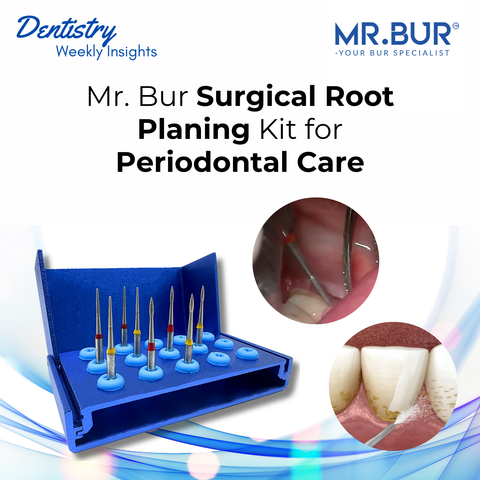A dental abscess, also known as a dentoalveolar abscess or root abscess, is a localized collection of pus that typically results from an infection within the tooth. It is one of the most common dental emergencies, often leading to significant pain and discomfort for patients. As a dental professional, it is crucial to understand the types of abscesses, their causes, and the most effective treatment approaches to ensure optimal patient outcomes.
This article explores the common types of dental abscesses, the treatment approaches, and strategies to prevent complications.
Types of Dental Abscesses
1. Periapical Abscess (Root Abscess)
The periapical abscess is the most common form of dental abscess. It develops at the tip of the tooth root, typically as a result of bacterial infection that has infiltrated the pulp (soft tissue inside the tooth). The primary causes include:
-
Tooth decay: Infected cavities that penetrate the pulp.
-
Broken teeth: Fractures that expose the pulp to bacteria.
-
Periodontal disease: Infections in the gums that extend to the root of the tooth.
-
Failed root canal therapy: If a root canal treatment does not fully eliminate the infection, abscesses can develop.
2. Periodontal Abscess
Unlike periapical abscesses, periodontal abscesses occur in the gums around the tooth. These are usually associated with gum disease (gingivitis or periodontitis) and occur when bacteria invade the tissues surrounding the tooth root.
Diagnosis and Treatment of a Dental Abscess
Initial Assessment and Diagnosis
When a patient presents with symptoms of a dental abscess, such as severe pain, swelling, or fever, a thorough clinical examination and diagnostic imaging (e.g., X-rays) are essential to determine the extent of the infection and identify the specific type of abscess.
1. Treatment with Antibiotics and Drainage
The initial step in managing a dental abscess typically involves the use of antibiotics to control the infection and drainage of the pus to relieve pressure and pain. If the abscess has created a localized pocket of pus, incision and drainage are performed to ensure the infection does not spread.
2. Root Canal Therapy
If the tooth is restorable, root canal therapy is the next step. The goal is to remove the infected pulp, clean and disinfect the root canals, and seal them to prevent further bacterial invasion. Tools like Mr. Bur Endo Z Burs are essential in this process, allowing precise access to the pulp chamber and root canals. These burs are specifically designed to refine access cavities without damaging the surrounding structures, making them perfect for abscess drainage during root canal therapy.
Recommended Kit: Pulp Access Kit for Pulpotomy & Pulpectomy Treatment
3. Tooth Extraction and Soft Tissue Curettage
If the tooth is deemed non-restorable due to extensive infection, fractures, or failed root canal therapy, extraction is necessary. After removal of the tooth, the soft tissue at the root tip (apical tissue) may need to be curetted to ensure all infected tissue is removed. In some cases, a surgical procedure to fill the root tips or biopsy may be required to evaluate the extent of infection.
Complications and Reasons for Treatment Failure
Even after conventional root canal therapy, abscesses may fail to heal due to several factors:
-
Cyst formation: An abscess may result in the formation of a cyst, which can prevent healing.
-
Inadequate root canal therapy: If the infection is not fully addressed, the abscess may recur.
-
Vertical root fractures: Cracks in the root can lead to persistent infection.
-
Foreign material in the lesion: Materials left behind during previous treatments can impede healing.
-
Associated periodontal disease: Gum disease can complicate the treatment of an abscess.
-
Penetration of the maxillary sinus: Infections can spread to the sinuses, complicating healing.
In these cases, Mr. Bur Degranulation Kit, which includes tools for precise periodontal debridement, can help manage tissue and ensure all infected material is removed during surgical interventions.
Prevention of Abscess Formation
While treating abscesses is crucial, prevention is equally important. Here are some strategies that dental professionals can implement to help prevent abscesses in patients:
-
Regular Checkups and X-rays: Regular dental visits help identify early signs of tooth decay, fractures, or gum disease that can lead to abscess formation.
-
Root Canal Treatment: Ensure thorough root canal procedures are performed, particularly for teeth with deep decay or infection.
-
Good Oral Hygiene: Encourage patients to maintain good oral hygiene to prevent tooth decay and gum disease, which are common causes of abscess formation.
Dental abscesses are a common yet serious concern in dental practice, requiring a comprehensive treatment approach that integrates effective clinical intervention with the use of specialized dental tools. By utilizing Mr. Bur’s Endo Z Bur for precise access to the pulp chamber and Mr. Bur's Degranulation Kit for thorough periodontal debridement, dental professionals can ensure effective management of abscesses. Incorporating these high-quality products, alongside a strong focus on prevention, helps to address the infection and reduce the risk of recurrence, ultimately ensuring long-term patient health and satisfaction.
Diamond Burs, Carbide Burs, Surgical & Lab Use Burs, Endodontic burs, IPR Kit, Crown Cutting Kit, Gingivectomy Kit, Root Planning Kit, Orthodontic Kit, Composite Polishers, High Speed Burs, Low Speed Burs



